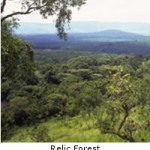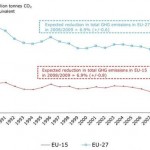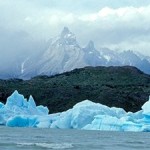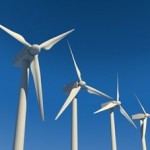
Drought in the Amazon and Elsewhere
Parts of the Amazon basin were badly affected by drought during the later part of 2010. An unusually dry July-September period in north-western Brazil resulted in sharply reduced stream-flow in many parts of the Amazon catchment, with the Rio Negro, a major Amazon tributary, falling to its lowest level on record. Earlier in the year, Guyana and the eastern Caribbean islands were badly affected by drought, with rainfall for the period from October 2009 to March 2010 widely in the driest 10% of recorded years.
In Asia, parts of south-western China experienced severe drought through late 2009 and early 2010. Yunnan and Guizhou provinces both had their lowest rainfalls on record during the period from September 2009 to mid-March 2010 with totals widely 30% to 80% below normal. The dry conditions were also accompanied by above-normal temperatures and numerous forest fires. Conditions there eased with good rains during the summer. Pakistan also experienced drought in the early months of 2010 before the onset of the monsoon. Summer rains also eliminated developing drought conditions in parts of Western Europe, where the United Kingdom had its driest January-June period since 1929.
Some other parts of southern Asia, including north-eastern India, Bangladesh, and parts of Thailand and Vietnam, were relatively dry during the main monsoon season, although Thailand and Vietnam were then hit by floods in October. Whilst wide-spread above-normal rains eased long-term drought in many parts of Australia, the south-west was a marked exception, with January-October 2010 being the region’s driest such period on record.
El Niño, La Niña and Other Major Large-Scale Climate Drivers
2010 began with an El Niño event well established in the Pacific Ocean. This broke down quickly in the early months of the year. A rapid transition took place and La Niña conditions were in place by August. By some measures, the La Niña event in progress in late 2010 is the strongest since at least the mid-1970s. The atmospheric response has been especially strong, with the Southern Oscillation Index (SOI) reaching its highest monthly value since 1973 in September. The El Niño-to-La Niña transition is similar to that which occurred in 1998, another very warm year, although in 2010, the El Niño was weaker, and the La Niña stronger, than was the case in 1998.
The eastern tropical Indian Ocean was also significantly warmer than normal during the second half of 2010 (negative Indian Ocean Dipole), in contrast with the previous La Niña event in 2007-08 when it was generally cooler than normal. The Arctic Oscillation (AO) and North Atlantic Oscillation (NAO) were in a negative phase for most of the year, exceptionally so in the 2009/10 Northern Hemisphere winter, which on most indicators had the most strongly negative seasonal AO/NAO on record. The Antarctic Oscillation (AAO) {also known as the Southern Annular Mode (SAM)} was in positive mode for most of the year, reaching its highest monthly values since 1989 in July and August.

Tropical Cyclone Activity Well Below Normal, Except in the North Atlantic
Global tropical cyclone activity was well below normal in 2010, except in the North Atlantic. A total of 65 tropical cyclones have been observed so far in 2010, of which 35 have reached hurricane/typhoon intensity as of 30 November. These are both well short of the long-term averages of 85 and 44 respectively. It is likely that the final total for the year will be the lowest since at least 1979.
Tropical cyclone activity was especially sparse in the North Pacific Ocean. Only 7 cyclones occurred in the North-east Pacific and 14 in the North-west Pacific (long-term averages 17 and 26 respectively). Both the North-east and North-west Pacific totals were the lowest on record for January-November. In contrast, the North Atlantic had a very active season with 19 named storms and 12 hurricanes, which is equal second highest behind the record of 15 set in 2005 (long-term averages 10 and 5 respectively).
The strongest tropical cyclone of the year was Super-typhoon Megi, which crossed the northern Philippines in October after reaching a minimum central pressure of 885 hPa, making it the strongest tropical cyclone in the world since 2005 and the strongest in the North-west Pacific since 1984. Megi caused wide-spread damage to infrastructure and agriculture in the northern Philippines, Taiwan and Fujian province in China, but only limited casualties. Tomas (North Atlantic, November) reached category 2 intensity, but its associated rains contributed to the spread of a cholera epidemic in Haiti.

Polar Regions: Third-Lowest Arctic Summer Sea Ice Minimum on Record
Arctic sea-ice extent was again well below normal in 2010. The minimum extent of Arctic sea ice was reached on 19 September with an area of 4.60 million square kilometres, the third-lowest seasonal minimum in the satellite record after 2007 and 2008, and more than 2 million square kilometres below the long-term average. The autumn 2010 freeze-up has also been abnormally slow, with the ice cover as of 28 November being the lowest on record for the time of year. The Canadian sector had its lowest summer ice extent on record. The low ice cover was consistent with well above normal temperatures over most of the Arctic, with numerous stations in Greenland, as well as the Greenland/Arctic Canada region as a whole, having their warmest year on record with annual mean temperatures 3-4°C above normal.
In contrast, Antarctic sea ice extent was generally slightly above normal in 2010, with the lowest monthly average being 3.16 million square kilometres in February, 0.22 million square kilometres above the long-term average. Temperatures averaged over the Antarctic region were also slightly above normal.













